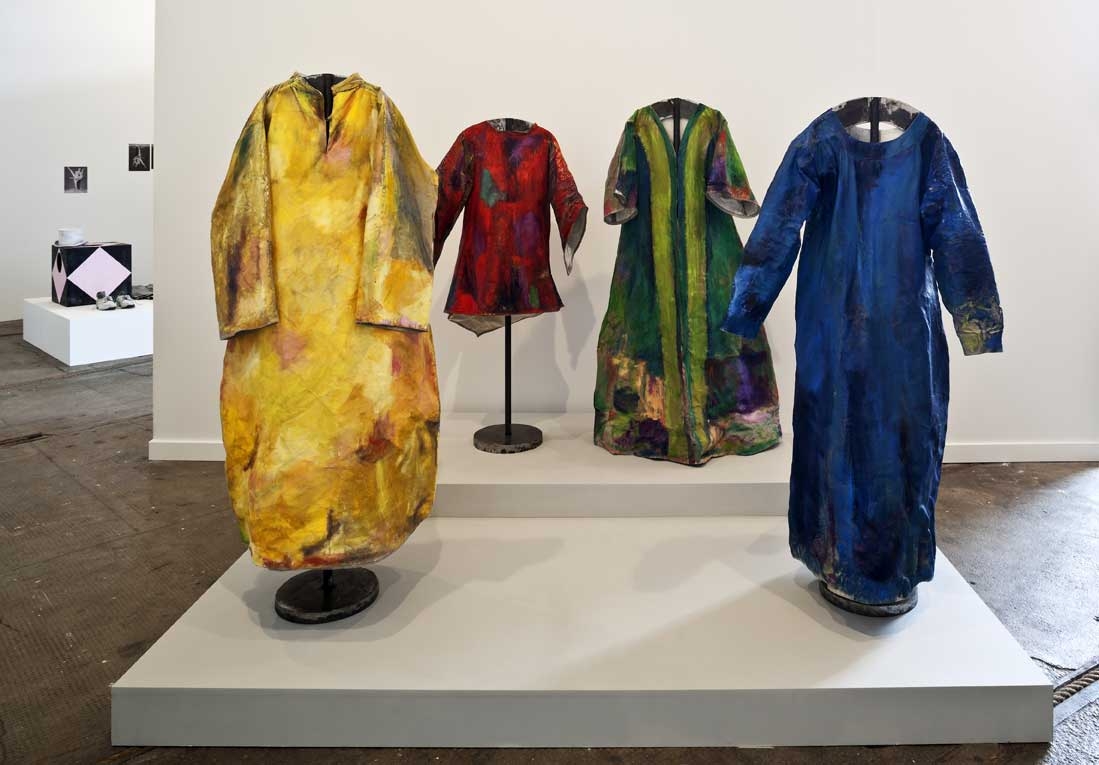In Aesthetic Theory (1970) Theodor Adorno noted that ‘great artists since Baudelaire were in conspiracy with fashion’. As a significant feature of many modernist and early avant-garde movements, costume has long offered a space for the critical collision between fashion, adornment, performance, theatre and art. From Baroness Elsa von Freytag-Loringhoven and Sonia Delaunay to Theo van Doesburg and Hans Arp, artists have adopted gesture, pose, performance and costume as powerful modes of expression and critique. Long before Lady Gaga’s appropriation of Jana Sterbak’s Vanitas: Flesh Dress for an Albino Anorectic (1987), art and costume had pursued a reciprocal, if sometimes fractious, relationship. Artists’ interest in costume continues unabated today, perhaps no more so than in interrogations of gender and identity through performativity.
Following Roland Barthes’s notion of ‘written clothing’ (as articulated in The Fashion System, 1967), the group show Costume: Written Clothing attempts to reflect on some of these themes by drawing together a fairly disparate range of artists who have, according to curator Claire Jackson, conceived of costume as ‘a device or prism through which to investigate relationships between performance, image and Sculpture.’
As a whole, the exhibition succeeds in highlighting the multifarious and layered approaches to costume adopted by contemporary artists, yet the sheer number and variety of works on show might also be deemed its biggest flaw. Any thematic coherence, however subtle or nuanced, is sometimes lost within a fairly crowded, cacophonous arrangement. The works themselves are also uneven and it can be hard to ascertain the rationale for the inclusion for some of them. On the other hand, Jackson has avoided the temptation to devise the kind of heavy- handed, overly curated or tightly woven theme where, as John Baldessari has observed, artists are used simply to illustrate a curator’s thesis. As such, works range from Matthew Darbyshire’s Standardised Production Clothing Versions 1–10 (2009) – garments on mannequins displayed in floor-to-ceiling, street-facing windows which appear as a pop-up shop in the gallery space – to Cuff and Collar (2010), a monumental oil-on- linen painting by Alexis Marguerite Teplin. Other works include videos such as Walker (2010) by Pablo Bronstein, inkjet prints by Sarah Wright and sculptural collage/assemblage by Steven Cairns. Some of the strongest components of the exhibition offer the audience an opportunity to revisit the relics of performances past, reactivating debates on what Amelia Jones has described as ‘presence in absentia’. In Joanne Tatham and Tom O’Sullivan’s costume from Think, Think Thingamajig: What Do You Represent? (2006) and Clare Stephenson and Sophie Macpherson’s Untitled (Tracksuit) (2012) and Untitled (Opera Cloak) (2012), for example, the works are provocative in questioning the status of these formerly inhabited and performed costumes as static sculptural objects which simultaneously historicise and document past work.
This review originally appeared in the September 2013 issue.
